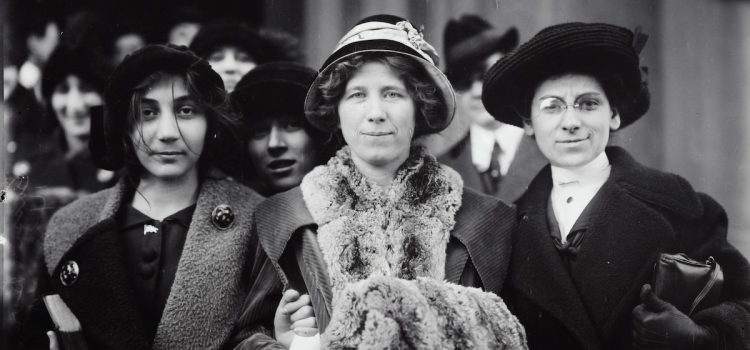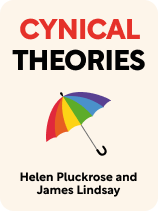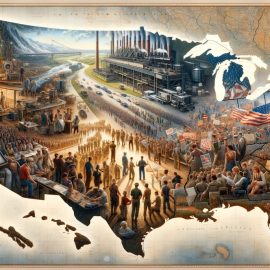

This article is an excerpt from the Shortform book guide to "Cynical Theories" by Helen Pluckrose and James Lindsay. Shortform has the world's best summaries and analyses of books you should be reading.
Like this article? Sign up for a free trial here.
What were some of the first social justice movements? How did they differ from later movements?
Authors, academics, and cultural critics Helen Pluckrose and James Lindsay discuss the history of social justice in politics and scholarship. They say that the social justice we have today is far removed from the earlier movements.
Continue reading to learn about the origin of social justice movements.
The Origin of Social Justice
Pluckrose and Lindsay write that the origin of social justice is found in attempts to help people make material gains. For a long time, social justice movements focused on concrete political and economic advances. Advocates for social justice had specific goals—women’s suffrage, an end to legal segregation, or legalized gay marriage, for example. The authors outline two main forms of scholarship that take material approaches to social justice: liberalism and Marxism.
(Shortform note: In addition to liberalism and Marxism, religion was also an important part of many early social causes. Religious groups provided not only the organization necessary to advocate for a cause but also common, relatable rhetoric around equality and charity. In the United States, for example, early social justice movements from the abolitionist movement to some feminist groups to the civil rights movement were based in large part on the ideals of Christianity.)
Liberalism
Liberal scholars and activists believe society should be run according to reason, logic, and evidence-based arguments. Just as science uses evidence and reason to arrive at objective truths about the world, liberals argue that empirical evidence and rational debate can determine the best path forward for society. Liberal activists advocate social justice through concrete legal and political advancements, fighting for universal rights and equal treatment under the law. This ensures everyone is on an equal playing field in society.
For example, 18th-century liberal philosopher Mary Wollstonecraft (A Vindication of the Rights of Woman) argues men and women alike are rational individuals and that when, given the same education, both are equally intelligent. She, therefore, suggests a rational society would extend political and property rights to women as well as men.
(Shortform note: While Pluckrose and Lindsay argue liberalism such as Wollstonecraft’s has declined in social justice scholarship and activism over the last several decades, parts of the ideology still hold sway over politics. With the collapse of the Soviet Union and the communist bloc in the late 20th century, there were no longer any significant challengers to the global liberal status quo. And while some aspects of liberalism have come under attack since, like democracy and free speech, others like free-market capitalism and secularism are still prevalent in global politics today.)
Marxism
Marxist scholars and activists believe in historical materialism, or that all of politics and history is based on economic forces and class conflicts. This includes social inequalities. Marxists, therefore, argue the best way to address social inequality is economic change, using revolutionary means if necessary. On a larger scale, they argue socialism will create total economic equality, which will then lead to total social equality. On a smaller scale, Marxist academics study how social oppression comes from and relates to economic inequality and capitalism.
For example, from a Marxist perspective, Americans didn’t enslave Africans because Americans believed in racial superiority. Instead, they enslaved Africans because free labor created an incredible amount of wealth for them. Slave owners used the idea of racial superiority as a way to justify this economic exploitation. In other words, the cultural belief was caused by economic circumstances and not the other way around.
(Shortform note: While Cynical Theories suggests Marxism and postmodernism or critical theories are separate fields, some academics and commentators view both as part of a larger whole: a revolutionary ideology looking to try and establish leftist totalitarian rule like that of the Soviet Union. For example, Mark Levin’s American Marxism describes critical theories and Marxism as the same thing, since both employ indoctrination and censorship to achieve their goals. Others, including Lindsay himself in his later work The Marxification of Education, argue that postmodernism evolved out of Marxism and therefore contains many of the same goals and views on society.)
What Happened Next
Pluckrose and Lindsay explain that, beginning in the 1950s, a new understanding of social justice began to emerge: postmodernism, an intellectual and artistic movement focused on challenging existing understandings of the world. Postmodernists focus not on concrete material issues, but instead on how power is expressed through culture.
In the 1990s through the 2010s, a newer generation of academics, artists, and activists modified postmodernism into critical theories, or academic fields that aim to “critique” culture by noticing and challenging specific hierarchies.

———End of Preview———
Like what you just read? Read the rest of the world's best book summary and analysis of Helen Pluckrose and James Lindsay's "Cynical Theories" at Shortform.
Here's what you'll find in our full Cynical Theories summary:
- How and why modern advocacy has gone too far
- How social justice scholarship and activism has become dangerous
- Why freedom of speech and belief in science are more important than ever






